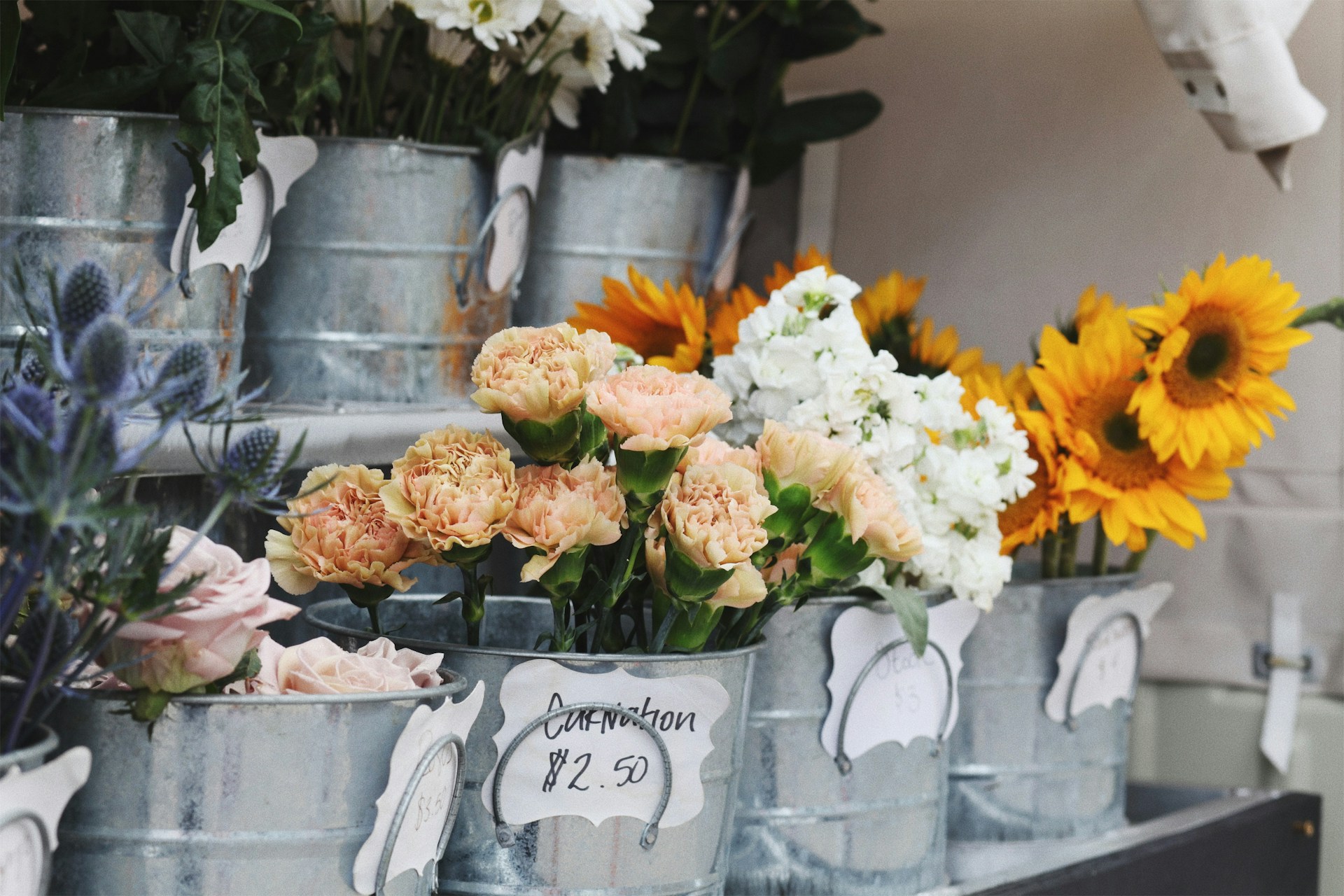
As a flower farmer, your field of blooms is a dazzling spectacle—a floral feast for the eyes. But beyond local markets and roadside stands, there’s a digital landscape waiting for your farm to take root. Setting up a website for your flower farm is like planting a virtual garden; it requires planning, creativity, and a sprinkling of tech-savvy. Fear not—unlike wrangling thorny rose bushes, you don’t need gloves for this task. Let’s dig into the steps to establish your flower farm’s online presence.

Step 1: Pick a Domain Name That’ll Stick
First up is choosing a domain name. This is your online address, the plot of cyberspace where your farm will live. Aim for something easy to remember and reflective of your farm’s essence. Most customers will assume your domain ends with .com – so unless you pick a local domain ending (such as .ca for us Canadians!) try to stick with .com or .co.
Also, try to avoid the digital equivalent of pesky weeds, like dashes or numbers that confuse folks. Once you’ve settled on the perfect domain name, register it with a reputable domain registrar. We’d recommend Namecheap.com for the affordability and frequent coupon codes available.
Step 2: Choose Your Plot Wisely: The Website Platform
Next, select a platform to build your website. Options like Squarespace, WordPress, and Wix have readymade templates that make assembling your site as easy as harvesting zinnias on a sunny day. Consider if you need e-commerce capabilities to sell flowers directly. If that’s the case, platforms like Shopify (though a bit pricier) could be a worthwhile investment.
Step 3: Design That Blooms
When laying out your website, think of your homepage as the entrance to your farm—a place that beckons visitors to explore further. A small touch that can go a long way is to include professional, high-quality images of your flowers, an ‘About Us’ section to share your story, and a ‘Contact’ page for inquiries. Keep navigation intuitive, like a well-trodden garden path, leading visitors naturally through your content.
Step 4: Content Rich as Compost
Rich, engaging content is to SEO what compost is to gardens—a booster of organic goodness. Having a blog where you share relevant content will help make your website more visible to people searching for you. Consider blog posts about your flower varieties, the joys and challenges of flower farming, and tips for arranging blooms. These entries, peppered with relevant keywords, help improve your search engine rankings and establish your farm as an authority.
Step 5: E-commerce for the Blossoming Business
If you plan to sell flowers or farm experiences online, setting up a shop on your website is like adding a bustling farmers’ market stall—only virtual. Display clear, beautiful photos of your products, offer secure payment options, and provide all the details customers need to make informed purchases. We recommend Shopify as an easy platform for this.
Step 6: A Website as Social as a Sunflower Link your website to your social media profiles—connecting your digital soil to the ecosystems of Instagram, Facebook, and Twitter. It’s like cross-pollination for your content; each platform feeds into and supports the others, helping your audience and customer base grow.
Step 7: SEO, Your Cultivation Tool for Visibility Optimize your website for search engines so that when someone’s hunting for local flowers, your farm pops up. Research keywords relevant to your business and be sure to use them! Add descriptive alt-text for images, and ensure your site is mobile-friendly, so it looks gorgeous on every device.
A website for your flower farm invites the world to peruse your petals from wherever they may be. It’s your digital storefront, your storytelling canvas, and your connection hub—all blooming in unison to create a brand as memorable and vibrant as the flowers you grow.
Happy planting!

This is my first time paying a visit at here and it’sr eally pleasant to be able to read all at one place.